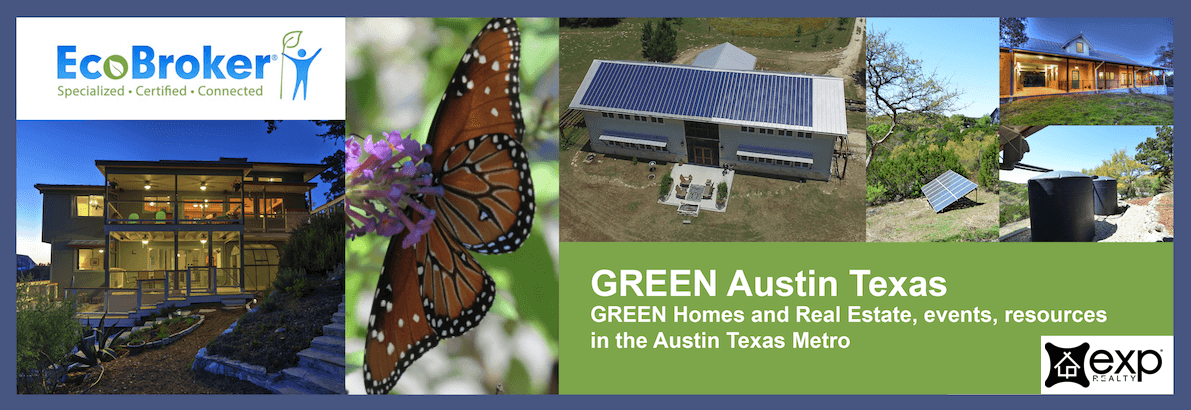
I am a National Wildlife Federation certified backyard habitat steward as well as a REALTOR® who specializes in green homes. I proudly display my TOFGA (Texas Organic Farmers and Gardeners Association) as well as NWF Habitat signs on my yard’s gate as well as display the signs on my table at green events where I serve as an environmental educator. I feel good about this as well as my recycling and other volunteer work for our Earth. I also drive a hybrid Prius near zero emissions vehicle in my Real Estate work in and around Austin, Texas. I do this because I feel it is the “right” thing to do, but are there economic benefits of sustainable gardens and wildlife habitat?
Nativescapes are Sustainable, Beautiful
and Provide Habitat
The works of conservation planner Randall Arendt are particularly appropriate here as well as other observations I have had over the years. Randall Arendt says money grows on trees and that conservation developments that include sustainable greenspaces and wildlife habitat are “twice green”. What he means is that money grows on trees in the sense that trees add value. Even the common production builders know that trees add value so builders can charge lot premiums for treed lots as well as for lots that overlook greenbelt or “wildlife habitat”. By “twice green” Randall Arendt is referring to the fact that green developments are green in an environmental way but also in a monetary way, the properties simply sell for more money AND there are less costs in developing this way. Less grading, less roads and less concrete mean less construction costs while adding more beauty, sustainability and value. Consumers value and therefore pay more for homes in these types of developments.
Native landscapes will only become more and more valuable and desirable as people realize the scarcity of water and the value of wildlife including pollinators like butterflies and bees. I myself once thought Saint Augustine lawns were beautiful. Now, I treasure the “nativescaped” yards that provide food and shelter for wildlife, are beautiful to look at and need little or no watering. Backyard wildlife habitat homes appeal to buyers that love and appreciate nature. If a native landscape or wildlife habitat is done correctly, it definitely adds value by being both beautiful and sustainable. Native trees and other plants will outperform hybrid trees and plants in being able to survive local weather extremes such as drought or floods and not needing replacement.
Non native plants and trees may have a limited lifespan or require lots of extra care such as pruning and excess water. One example is the popular Red Tip Photinia (Photinia fraseri). While it makes a pretty plant it requires frequent pruning or it will grow to a monstrously huge size. Red Tip Photinia provides no food for wildlife and is susceptible to fungus diseases. Wildlife habitat by its very nature is not a well manicured look. In fact, quite the opposite is needed to provide the hiding and nesting places that wildlife need. However, a wildlife habitat can provide both the dense areas wildlife need and still be beautiful when tastefully and artfully designed. Let the plantings get bushy and dens but manicured along the edges, replete with smooth walkways that people of all ages can enjoy. I had one seller who even had a camera installed in a birdhouse in his newly wildscaped acreage lot. The camera was wired into the house so that you could see the bird inhabitants’ behaviors such as egg laying and hatching all from the indoor comfort of their home.
Environmental Education Needed
There are many people who need to be educated as to the value of a native landscape. These are the same people too who need education as to the benefits and quality of a greenbuilt home as well. To the uneducated, a native, sustainable landscape may just look like “weeds” but to the aware eye, native landscapes are exquisitely beautiful because they conserve water and other resources as well as provide habitat and food for wildlife and they add monetary value. There is a segment of the population that fully appreciates the value of greenbuilding as well as natural landscapes that are sustainable and provide habitat for wildlife. The general populace must be educated to fully realize the benefit of both greenbuilt homes as well as the facts about water, wildlife and native landscapes. I am thankful for the education resources we have in the National Wildlife Federation, TOFGA (Texas Organic Farmers and Gardeners Association), the Native Plant Society of Texas (NPSOT), Texas Parks and Wildlife’s “Texas Wildscapes” program, the Lady Bird Johnson Wildflower Center and Randall Arendt, conservation planner, lecturer, author of Growing Greener: Putting Conservation into Local Plans and Ordinances, Envisioning Better Communities: Seeing More Options, Making Wiser Choices and others. If you too want to learn more about the economic and environmental benefits of sustainable gardening practices and wildlife habitats, you might do well to start with these resources.
